Natural History |
|
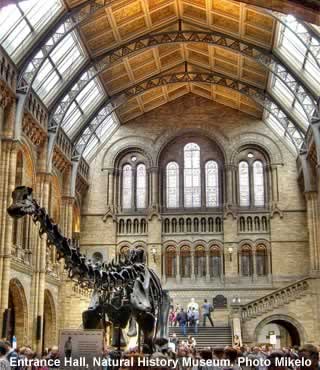 |
|||
The UK's leading animal and plant-life museum |
|||||||
Listen to this article |
|||||||
|
|||||||
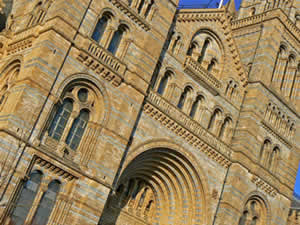 Natural History Museum Photo TourNorfolk |
|||||||
The Natural History Museum is one of the most popular tourist spots in London. Rather than displaying pictures and fossils of animals from the past and present, the focus here is on actually trying to recreate what the creatures were like - and so the museum contains countless models, replicas, and stuffed displays, of everything from dinosaurs to pigeons. It contains over 70 million items in total, in its five main categories of Botany, Entomology, Mineralogy, Palaeontology and Zoology. |
|||||||
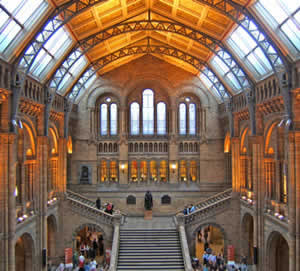 Inside the Museum Photo Tim Parkinson |
|||||||
Immediately upon entering, you'll be confronted with a 105-foot long replica Diplodocus skeleton. This startling display has become the museum's trademark – and it proved to be so popular that copies were made for many other museums in Europe and South America, making it the most-seen dinosaur skeleton in the world. |
|||||||
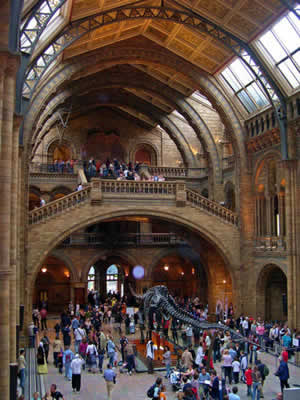 The Central Hall of the Waterhouse building within the Natural History Museum Source WikiMedia (PD) |
|||||||
|
|||||||
There are other star attractions here too, including a model T-rex, a comprehensive display of gemstones, a recreation of an earthquake, and – perhaps most impressively – a life-size replica of a blue whale, the largest animal on the planet. The model is a full 25-metres long, and can be viewed from above and below. |
|||||||
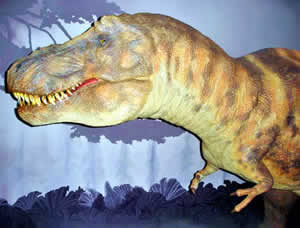 Head of a T-Rex Dinosaur Photo Samuel Mann |
|||||||
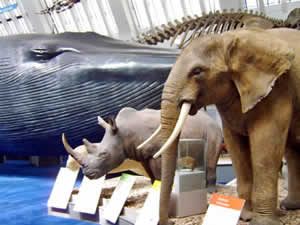 Stuffed Mammals including the Blue Whale Photo gavinandrewstewart |
|||||||
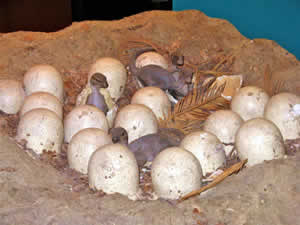 Hatching Dinosaur Eggs! Photo Vic15 |
|||||||
The museum is sometimes nicknamed the Cathedral of Nature, because of its famously ornate architecture. It is less well-known that this beautifully designed building was actually the result of a competition – which Captain Francis Fowke won in 1864. Unfortunately he died soon afterwards, and so his plans were revised by Alfred Waterhouse. The building eventually opened in the late 1880s, as a department of the British Museum. This only changed in 1991, when it took on the name we know today. |
|||||||
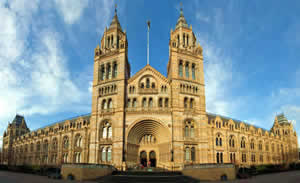 The Cathedral of Nature Photo Diliff |
|||||||
|
|||||||
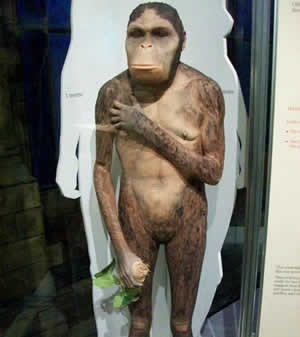 The museum even depicts our evolution Photo nickstone333 |
|||||||
The Natural History Museum often has temporary exhibitions, to go along with its permanent collections. In the past, these have included art, photography, and more animal models. There are also many other things to do here, including guided tours, children's activities, shops, cafés, and, during winter, even an outdoor ice rink. Whether you plan ahead, or just turn up and take everything as it comes, you're guaranteed to never be bored. |
|||||||
|
|||||||
Natural History Museum is open daily from 10am to 5:30pm. Entry is FREE. Cromwell Road, London, SW7 5BD. Tel: 02079 425 000 |
|||||||
|
Pocket Britain is optimised for use on a smartphone or tablet with internet access. All content is subject to copyright. All reasonable methods have been used to ensure information supplied is accurate at the time of publication. However, it is advisable to check information before relying on it. Privacy Policy |